







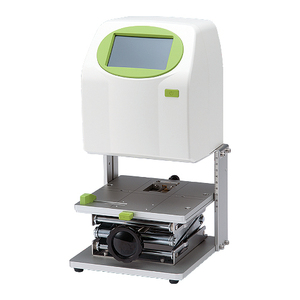
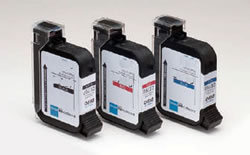
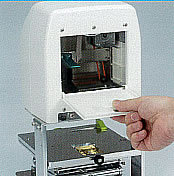
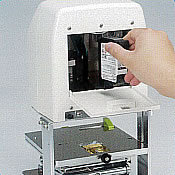

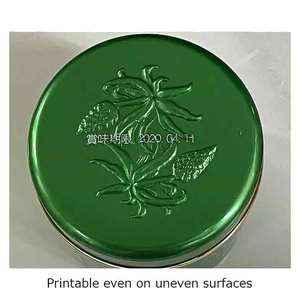












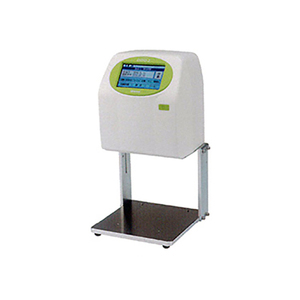
















Top categories
About date printer
In an era where consumer awareness and regulatory compliance are at their peak, the importance of accurate product labeling cannot be overstressed. From the early days of simple date stamps to the sophisticated date printing technologies of today, the journey of product labeling has been transformative. This article delves into the revolutionary world of advanced date printing solutions, exploring their evolution, technological advancements, and the myriad of applications across industries. As we uncover the significance of these innovations, we'll see how they not only meet the demands of transparency and safety but also enhance operational efficiency and cost-effectiveness for businesses worldwide.
The Evolution of Product Labeling
The concept of food labeling has evolved significantly as a response to public health concerns and consumer demand for transparency. The inception of food labels can be traced back to safety measures against foodborne illnesses in the mid-19th century. This concern for public health led to the establishment of food safety agencies and the development of guidelines for food handling and processing. Over time, as consumer habits shifted towards prepared products, there was a growing demand for detailed production information, which resulted in the requirement for ingredient listings on products engaged in interstate commerce by 1966.
The progression of food labeling took a substantial leap forward with the intervention of legal authorities in 1973, addressing the issue of misleading health claims on packaging. This pivotal moment led to the mandate that any food with health benefit claims must include a nutrition facts panel. By 1990, this evolved into a standardized nutrition facts panel, which became mandatory for all food companies. This panel provides consumers with essential information, such as calorie content and nutritional values, ensuring that claims made by food companies are consistent and verifiable.
Understanding Date Printing Technology
Date printing technology has evolved to meet the stringent requirements of product labeling, particularly in the food, beverage, and pharmaceutical industries. Modern date printers are predominantly automatic, leveraging advanced software that can effortlessly apply date information at high speeds, ensuring efficiency on production lines. These printers can maintain exceptional print quality even on moving items, which is crucial for readability and compliance with regulations.
The technologies employed in date printers vary, including continuous inkjet, thermal inkjet, and laser marking systems. Continuous inkjet printers create precise codes by projecting charged ink droplets onto the substrate, suitable for various surface types. Thermal inkjet printers, on the other hand, use heat to expel ink onto packaging, offering quick drying times and high-quality prints. Laser coders etch codes onto surfaces without ink, providing a permanent solution for date coding.
Each technology has its own set of considerations, such as substrate compatibility, line speed, and the physical handling stability of the product. The choice of a date printing solution on a production line must balance these factors against the cost of purchase and operation. These systems are integral in applications ranging from marking HDPE bottles to coding on beverage cans and packaged foods, ensuring that products are traceable and comply with industry standards.
Types of Date Printing Solutions on Alibaba.com

The marketplace offers a diverse range of date printing solutions designed to meet the needs of various industries. Among these, inkjet coders are prominent for their ability to print high-resolution expiry dates, batch numbers, and barcodes directly onto products and packaging. Thermal transfer overprinters, another category, are highly sought after for their precision and durability, making them suitable for high-volume production lines. Laser marking systems stand out for their permanence and are often used for etching dates onto hard surfaces without direct contact.
Applications of these date printers span across sectors, including food and beverage, where they are instrumental in printing best before dates on perishables. In the pharmaceutical industry, they ensure compliance with safety regulations by marking expiration dates. The packaging sector also relies on these machines to code information on various materials. Each type of date printer is designed to accommodate different materials and production speeds, ensuring that there is a coding solution available for every type of product packaging.
Innovations in date printing technology have led to the development of portable and handheld devices, which offer flexibility and convenience for on-the-go printing tasks. Industrial-grade printers are equipped with continuous ink systems that facilitate uninterrupted printing processes, essential for maintaining efficiency in fast-paced production environments. The advancements in this field have resulted in printers that are not only faster and more reliable but also capable of integrating with automated production lines for seamless operation.
Inkjet Coders
Inkjet coders are versatile tools capable of marking on a variety of substrates such as paper, plastic, metal, and glass. They are commonly used for imprinting batch codes, barcodes, expiration dates, and lot numbers. These coders are adept at printing alphanumeric text, 1D and 2D barcodes, and graphics, making them suitable for industries like food and beverage, pharmaceuticals, automotive, and cosmetics.
The technology behind inkjet coding allows for quick and clean printing, with software that alerts operators to low ink or solvent levels. This contributes to maintaining high print quality without compromising production speed. Inkjet coders can function independently with an intuitive interface or be integrated into a network for centralized control, enhancing their flexibility and efficiency.
Innovations in inkjet coding include sophisticated software and the potential for seamless integration with factory management systems. Some systems offer cloud-based solutions for real-time monitoring and assistance, ensuring continuous operation and performance optimization. These features collectively support the integrity of the supply chain by ensuring consistent labeling and traceability.
Thermal Transfer Overprinters
Thermal Transfer Overprinters (TTO) are integral to modern packaging and labeling, offering a versatile solution for printing variable content. These printers are adept at handling a range of data, from simple date and time codes to more complex regulatory and ingredient listings, as well as promotional content. TTO technology ensures high-resolution images on various materials, including flexible packaging film and labels, enhancing the readability and scan-ability of printed data.
The TTO range is designed to cater to high-speed, high-throughput environments demanding substantial variable content. Models are recognized for their cost-effectiveness and advanced technology that aims to reduce the total cost of ownership and minimize coding errors compared to traditional technologies.
A notable feature of certain TTO printers is their design, which allows them to remain in place during washdown processes. This feature is particularly beneficial in environments where cleanliness and hygiene are paramount, reducing preparation time and enhancing operational efficiency.
Key benefits of incorporating TTO models into production lines include minimizing operator interruptions, ensuring ease of use, fitting seamlessly into existing systems, and consistently delivering the right code at the right quality. These printers are an ideal choice for flexible packaging applications across various industries.
Laser Marking Systems
Laser marking systems represent a significant shift in the domain of product labeling, offering a clean, inkless method that's both environmentally friendly and efficient. These systems utilize laser technology for ablation and engraving, which involves removing material or etching into substrates to create permanent codes. The versatility of laser coding is evident in its ability to work with a variety of materials, including paper labels, cardboard, plastics like PET, PS, PP, PVC, as well as metals and glass.
Among the types of laser marking, dot matrix and vector are common, with dot matrix being faster and more energy-efficient, albeit at a lower resolution. Innovations in laser systems combine the speed of dot matrix with the quality of vector marking, optimizing the laser's operating time for coding. This efficiency translates into lower operational costs, as laser systems do not require consumables and have minimal maintenance needs.
Compared to traditional inkjet systems, laser coders are more cost-effective over time, reducing the average annual expenses associated with consumables and maintenance. They also integrate easily into production lines due to their compact size and flexible positioning. With the ability to print on stationary or moving packages, laser coding systems are adaptable to various industrial applications, enhancing productivity and reducing the potential for product recalls through precise and permanent coding.
Applications in Various Industries

Date printing technology is integral across various sectors, with its applications spanning from pharmaceuticals to the automotive industry, electronics, cabling, and cosmetics. The versatility of date code printers is essential as they must handle a broad spectrum of products and packaging types, adapting to different packaging materials. In the food and beverage industries, date coding is particularly crucial. It ensures compliance with legal requirements by marking perishable goods with best before dates, expiration dates, and use-by dates. These codes, often accompanied by batch or lot numbers, not only serve regulatory purposes but also provide consumers with information on product freshness and aid in internal tracking. The ability to print legibly and adhere to high-speed production lines is a key feature of date coders in these industries. For beverages, especially, the printers must operate effectively even in challenging conditions, such as high-speed bottling plants or environments with condensation issues.
Features and Innovations in Date Printing

The landscape of label printing technology has witnessed significant transformations, particularly in the realm of date printing. Innovations such as UV-curing inks and advancements in platemaking technology have revolutionized the process, enhancing the speed and efficiency of printing operations. The introduction of narrow web screen, hot-foil, and combination process presses in the 1970s marked a pivotal shift, with self-adhesive labels gaining popularity, now constituting a substantial portion of label usage in Europe.
The 1980s saw the advent of thermal direct and thermal transfer printing, which spurred the growth of self-adhesive price-weight label barcodes. This period also welcomed new materials like polypropylene and polystyrene films, catering to the demand for high-quality printing on diverse products. The digital era further accelerated change, with digital printing introducing new working methods, enhanced color management, sophisticated management information systems, and considerations for DPI resolution and color gamut.
Today's date printing technology is a testament to the industry's evolution, offering a variety of solutions to meet the ever-changing demands. From the early hand presses to the latest digital and laser printing techniques, the journey of date printing technology reflects a continuous pursuit of innovation and efficiency. This evolution ensures that current and future label printing methods not only keep pace with industry requirements but also push the boundaries of what is possible in product labeling.
Material Considerations for Date Printing Labels
When considering label materials for date printing, it's crucial to evaluate the substrate compatibility and environmental resilience. Labels must adhere well to surfaces such as paper, plastics, metals, and glass, which are common in packaging. The environmental conditions that the labels will be exposed to, like moisture, temperature extremes, and chemical exposure, dictate the choice of material.
For date printing, materials like matte or gloss paper can be used for indoor settings with varying lighting conditions. Polypropylene labels, with their slight stretch and moisture resistance, are suitable for less durable requirements and curved surfaces. For harsher environments, polyester labels are recommended due to their excellent tear strength and resistance to chemicals and heat.
Specialized materials such as retro-reflective polyester are ideal for applications requiring long-distance scanning, offering good outdoor durability and tear resistance. Tyvek labels, known for their strength and resistance to water and chemicals, serve well in industrial settings. Each material offers unique benefits, and the selection should be based on the specific needs of the date printing application.
Advantages of Advanced Date Printing Solutions
Advanced date printing solutions offer significant advantages in terms of operational efficiency and cost-effectiveness. By utilizing aftermarket services, businesses can address common issues with date coding machines without incurring the high costs associated with original equipment manufacturer (OEM) parts and services. Aftermarket repair services can extend the life of existing equipment, ensuring that printers continue to produce high-quality codes essential for traceability and compliance with distributor and government requirements.
Moreover, switching to aftermarket ink sources can result in substantial savings for companies. These inks are designed to be compatible with a wide range of printers and are formulated to perform at a level that meets or exceeds the quality of OEM inks. This compatibility reassures operators that production schedules will remain unaffected while also cutting down on the consumable budget. In an industry where precision and reliability are paramount, the advantages of advanced date printing solutions like these are clear: they reduce the variable costs of printing and maintenance while maintaining the high standards required for date coding applications.
Conclusion
The journey of date printing technology has been marked by continuous innovation, adapting to the needs of a dynamic market and the stringent demands of regulatory bodies. From the inception of basic food labels to the advanced, high-speed, and versatile date printing solutions available today, the industry has seen a remarkable evolution. These technologies, ranging from inkjet coders to laser marking systems, have revolutionized how businesses approach product labeling, offering solutions that cater to a variety of materials and environmental conditions. The advancements in this field have not only improved the quality and reliability of product information for consumers but have also provided businesses with cost-effective, efficient, and flexible labeling solutions. With the integration of aftermarket services and inks, companies can further optimize their operations and reduce costs without compromising on quality. As we look to the future, it is evident that the realm of date printing will continue to evolve, pushing the boundaries of innovation to meet the ever-growing expectations of both the industry and consumers.















